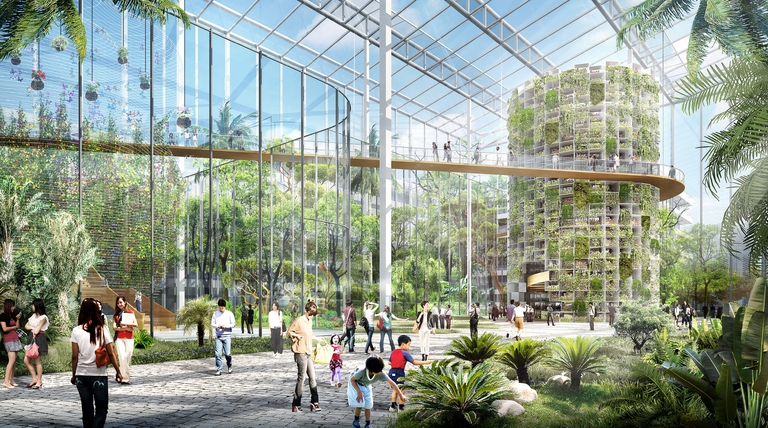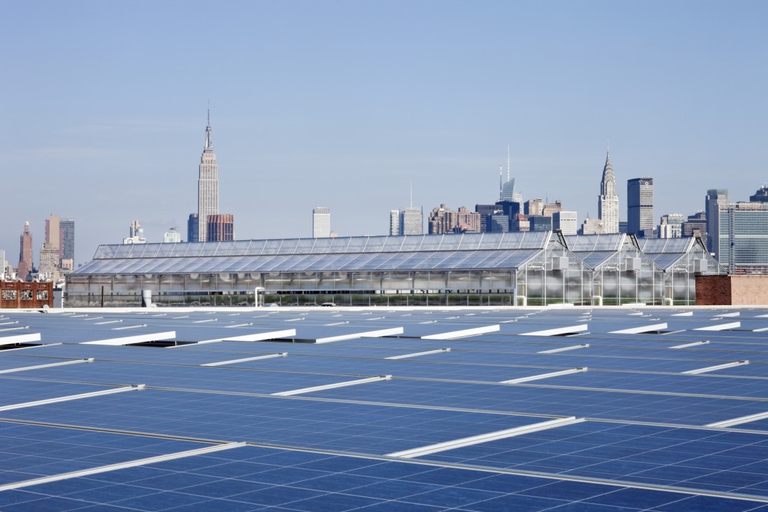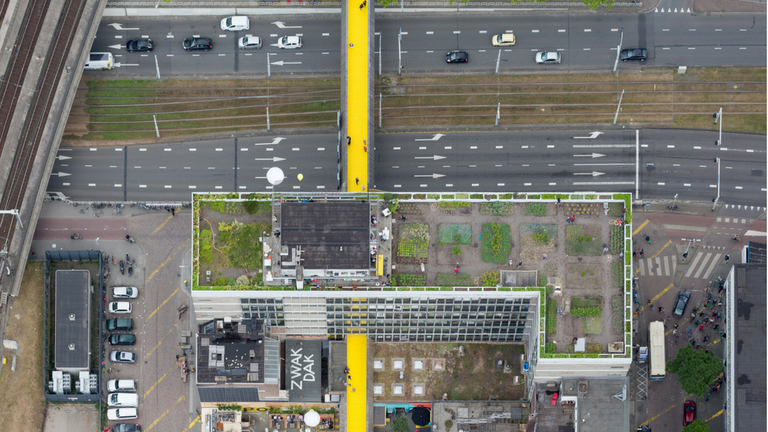
The World Forum on Urban Forests took place from the 28th of November to the first of December. More than 400 experts from 50 countries conversed with politicians, journalists and citizens to design the green cities of the future.
A few of the best ideas for rooftop farms from around the world. Where farm-to-table agriculture is becoming a key components of urban growth.
The phenomenon of urban farms took root after the Second World War to feed a population that was exhausted by years of poverty. In the last few years it has been growing exponentially, so much so that “locally sourced” no longer refers to products that come from the surrounding countryside, but in the very place where urban consumers live. The element of verticality was added to the equation, the opportunity and necessity to grow crops on rooftops and inside tall building allows for an efficient use of the limited space found in cities.
In some cases initiatives sprout from local communities, in others, prestigious architecture firms design innovative projects that use technology to incentivise local self-sufficiency from a nutritional standpoint as well as reduce the impact of urban demands on rural areas. Growing crops on terraces and rooftops is convenient not only because of greater solar exposure, but also because particulate matter tends to deposit at lower levels. Here are some of the most advanced rooftop and vertical farms from around the world.
Whilst large-scale hydroponic cultivation systems and urban farms are still struggling to catch on in the United States, they represent a solution to the problem of a growing population and the consequent need to increase food production in China. Nearly 24 million people live in Shanghai alone and the business capital’s rapid economic growth is threatening an agricultural system that is more limited in scale compared to the Western model, just like in other Chinese metropolises.
Leggi anche: Urban forests, cities’ answer to climate change (and much more)
Sunqiao represents a new urban approach to agriculture pioneered by international architecture firm Sasaki. The objective is to show that urban agriculture can grow vertically, just like skyscrapers. The plan for this district (whose construction began at the end of 2017) focuses on integrating vertical farms and research. Over half (56 per cent) of the diet of Shanghai’s inhabitants consists of leaf vegetables, making hydroponic and aquaponic systems particularly appropriate to satisfy their needs. Spinach, lettuce, kale and watercress don’t require specific care, they grow quickly and weigh very little, making them a cheap and efficient option.
The district features floating greenhouses, green walls and vertical facades for seed collection. This is an even more sustainable approach towards supporting the local food network, which perfectly fits the plan adopted by Shanghai that aims to safeguard food and farmers by taking control of local production and distribution whilst maintaining cultivations within the city.
Gotham Greens is a New York-based farming company that has been supplying the inhabitants of New York and Chicago with fruits and vegetables grown without using pesticides and with an irrigation system based on reusing water. It manages various rooftop farms on a number buildings (some of which are decommissioned, like a former wood warehouse in Brooklyn). The company was the first to design a commercial hydroponic urban farm in the country.
The largest and most advanced greenhouse as well as the most productive rooftop farm were opened in Chicago in 2015. Gotham Greens’ model incentivises local production, therefore sustainable development, whilst also cutting transport costs and using renewable energy for production. The founder of Gotham Greens, Viraj Puri, was invited as a speaker the Seeds and Chips summit in Milan in 2017, one of the most important food innovation events in the world.
DakAkker is the largest rooftop farm in Europe, in the centre of the Dutch city Rotterdam. It was created by Binder Groenprojecten in 2012 and the project was undertaken by ZUS society, in collaboration with the Rotterdam Environmental Centre. The building is fitted with a smartroof that works as a sensor with a water storage capacity that is superior to that of a typical rooftop garden, supplying all the water needed for growing crops.
DakAkker is also an area used to experiment new vertical farming methods in the city, not only by growing fruits and vegetables, but also by safeguarding urban biodiversity thanks to the presence of a botanical garden where various aromatic herbs are grown. Furthermore, considering the great importance of bees to the ecosystem (approximately 30 per cent of food derives from the pollination carried out by these insects), six beehives are present on the rooftop.
Siamo anche su WhatsApp. Segui il canale ufficiale LifeGate per restare aggiornata, aggiornato sulle ultime notizie e sulle nostre attività.
![]()
Quest'opera è distribuita con Licenza Creative Commons Attribuzione - Non commerciale - Non opere derivate 4.0 Internazionale.
The World Forum on Urban Forests took place from the 28th of November to the first of December. More than 400 experts from 50 countries conversed with politicians, journalists and citizens to design the green cities of the future.
Introducing plants into buildings to absorb CO2, eliminating indoor pollution and improving your mood. This is green architecture.
The Semìno project is a journey of discovery through different countries’ food habits, offering migrants employment opportunities and allowing us to enjoy the properties of vegetables from all over the world.
A great Amazon reforestation project has been agreed in Brazil, the largest in history. Will it endure the victory of Jair Bolsonaro’s far-right politics in the presidential election?
A million plants and 40,000 trees. Liuzhou Forest City, designed by architect Stefano Boeri, is set to be inaugurated in 2020 in the northern Chinese city.
Urban forests are the local answer to global problems. The benefits are numerous and affect many areas such as the climate, biodiversity, health, tourism.
Architects Stefano Boeri’s call to action on urban forestry asks planners all over the world to consider greening our cities as the core element of all projects.
The project is similar to New York’s famous High Line constructed on the railway that once connected the Meat Market to Midtown. But in the case of Seoullo 7017 in South Korea’s capital Seoul, a walkway has been constructed on an overpass dating back to 1970 where cars once sped along, and where today people can wander and enjoy the revitalised area. The Seoullo 7017
Sono sempre più numerosi i bambini birmani che dalle campagne si recano nelle metropoli in espansione in cerca di lavoro dopo l’apertura al libero mercato.










